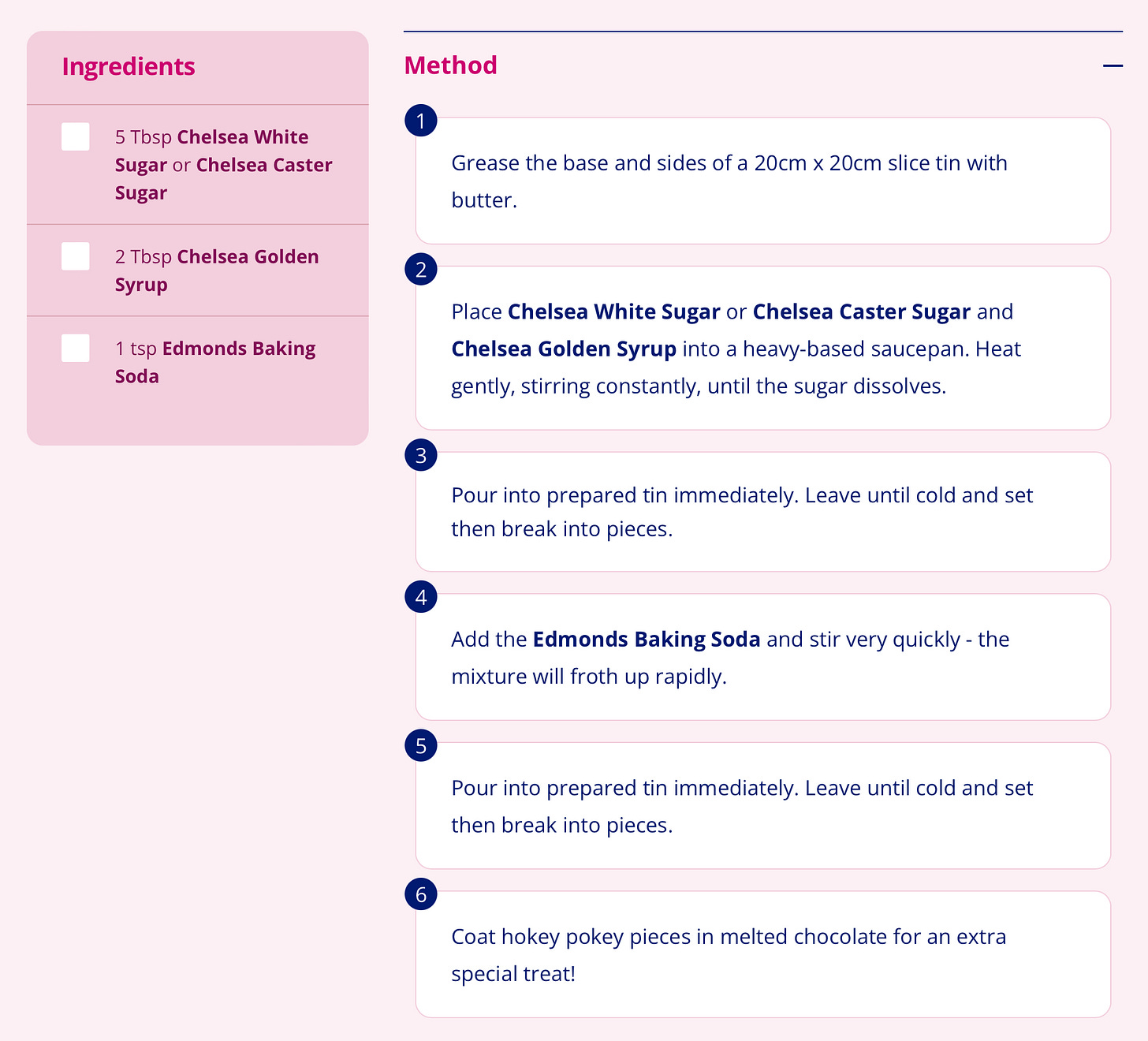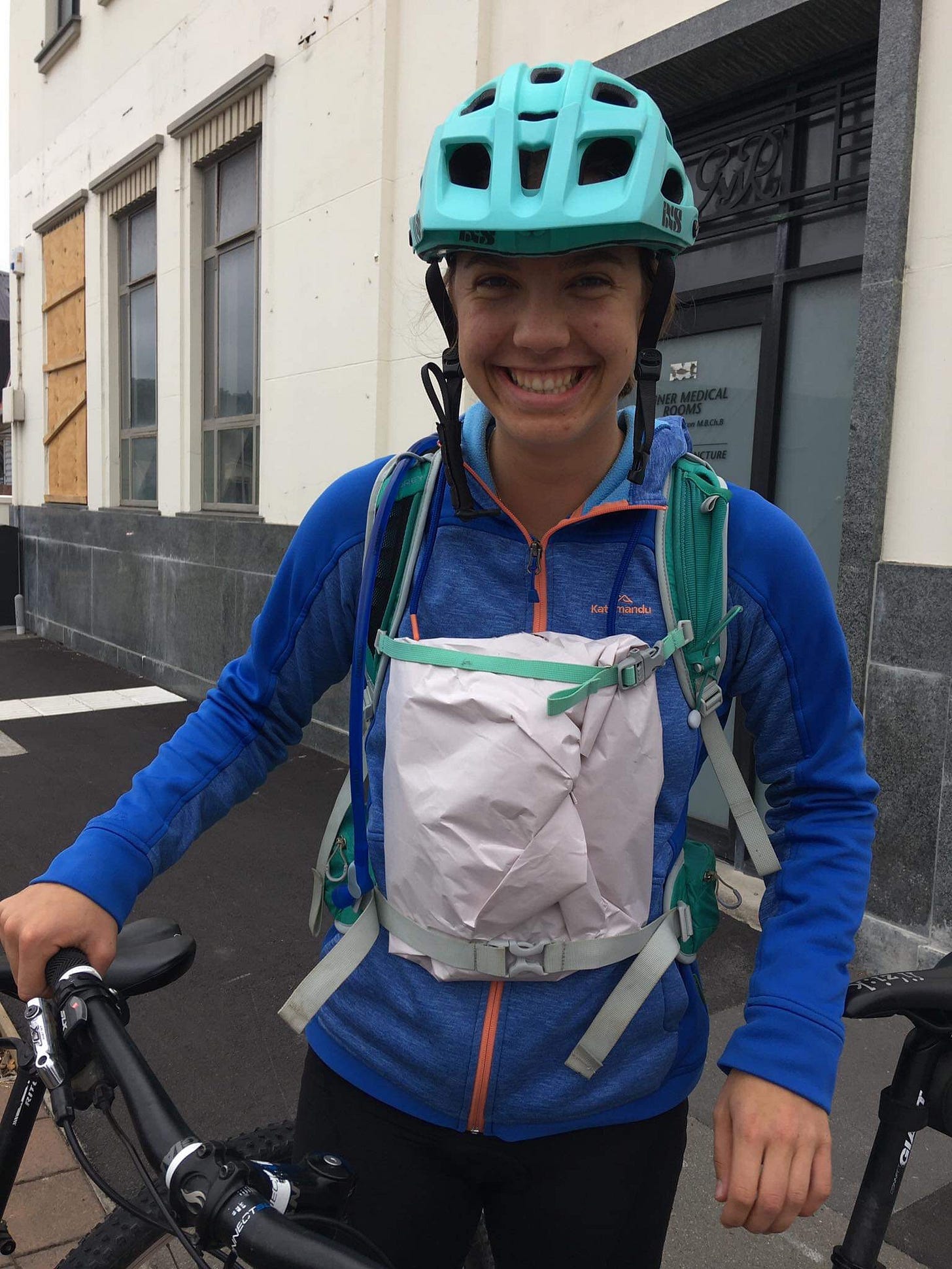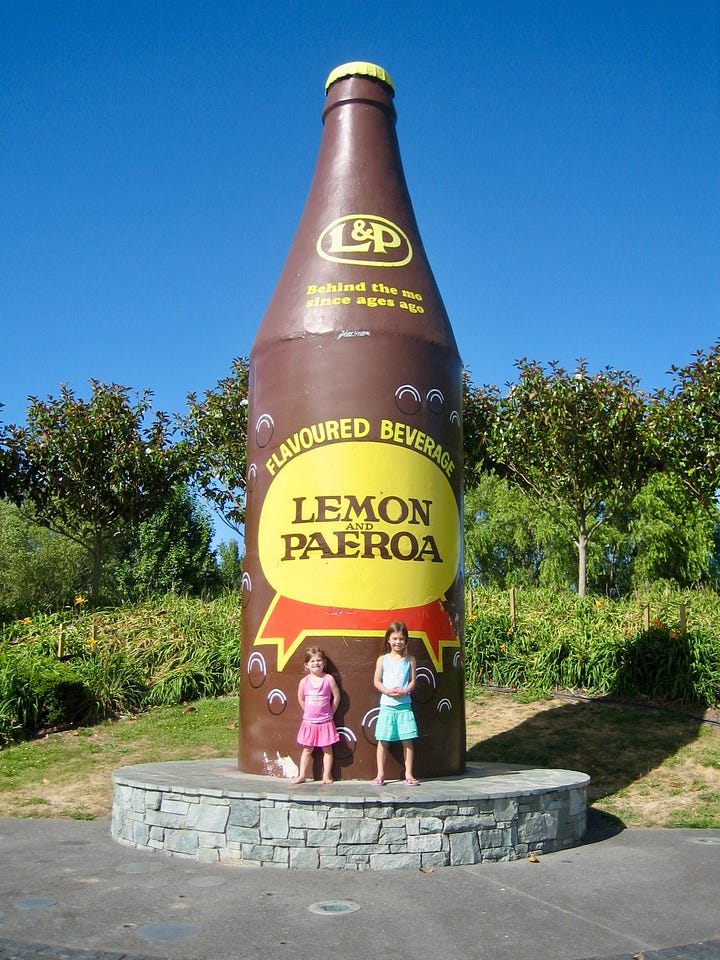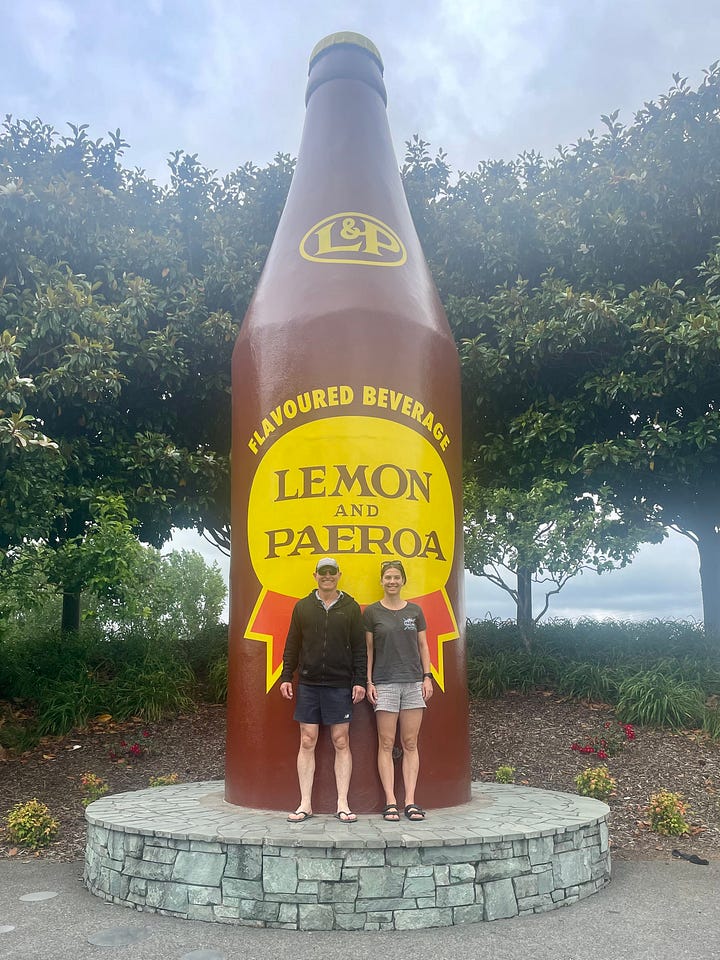Small Glory #21 - Kiwiana
A humorous look at New Zealand culture through the lens of iconic symbols.
Once a year kiwis race tiny red balls of chocolate down the world’s steepest street, which just happens to be in New Zealand. All in the name of Kiwiana tradition.
So what is Kiwiana?
Good question. It’s various things that represent New Zealand and its culture. It’s a strange mix of things (from food to flora to footwear) but nonetheless a very interesting one. Let’s dive in.
Jaffas
(Not to be confused with Jafas… a rather derogatory name for people that live in New Zealand’s biggest city).
Jaffas are little red chocolates, the ones raced down the world’s steepest street. These 2.8 gram chocolates can reach speeds of up to 100km/h! They’re delicious and far too easy to eat.
Jandals
Americans call them flip-flops, Australian’s call them thongs, but here in Aotearoa we call them jandals. The word comes from ‘Japanese sandal’, which makes a lot of sense. This footwear was designed for summer, able to be easily slipped on and off they are perfect for the beach. But in true kiwi fashion they couldn’t just have a single purpose, like all things, we applied our number-8-wire mentality (aka ingenuity) and came up with copious other uses for them too. I have seen them used as mud-flaps on a trailer, a door stop and even school uniform shoes. Growing up in a coastal town it only made sense to have jandals as our school uniform shoe. We did have to get ones with a back strap, so they were at least kind of ‘practical’. Also, their use isn’t limited to hot summer days, they’re equally good for winter, especially cycling in the rain, you can’t get wet socks if you aren’t wearing any (beat that logic). The strap would always pull out of the sole, but you aren’t a kiwi if you haven’t used the bread tag trick… (that number-8-wire mentality again).

The Red Band Gumboot
Footwear, sport item and national symbol all rolled into one. These are the jandals of the farming world. Slip them on and go, great for puddles, great for the farm, great for a trip to the supermarket, but some shops ask people remove muddy boots before entering, so it’s not uncommon to see a sock-clad person wandering around in the store.
What adds to their extreme versatility, is their ability to be both footwear and sporting equipment. Gumboot throwing is a national sport in New Zealand. It’s a combination of discus and hammer throw — just hiff the gumboot as far as you can. Maybe that’s why in 2017 the national gumboot throwing champion just happened to be our very own gold medal winning, Olympic shot putter, Valerie Adams.
Why are the first two things footwear… when the nation is known for its love of bare feet, something I wrote about here. My guess is that gum boots and jandals are the furtherest things from what could be called ‘footwear’ and that’s why they’re liked. Let me know your theory.
Hokey Pokey Ice Cream
Summer days, hands sticky from melting goodness, the sunny crunch of honeycomb. Hokey Pokey ice cream is vanilla ice cream with small pieces of honeycomb — or as it’s known in New Zealand, Hokey Pokey. It’s easy to make your own if you’d like a kiwi summer, I’m thinking about all you lucky ones in the northern hemisphere in summer at the moment!
My favourite recipe is from Chelsea Sugar here in NZ. Once set, all you have to do is crush it up and add it to vanilla ice cream.
https://www.chelsea.co.nz/recipes/browse-recipes/hokey-pokey

Fish and Chips (fush and chups if you have a kiwi accent)
Ahh another classic. Fish and chips. There is nothing that screams New Zealand more than carrying a hot newsprint parcel full of fish and chips down to the beach. That’s another thing, fish and chips taste better on the beach, it’s just a fact. By fish, I mean battered or crumbed fillets of snapper, gurnard, kahawai or hoki, alongside thick-cut hot chips (fries).
I have a good story about fish and chips. My friend and I had just finished a 50 kilometre bike ride along the Port Hills before ending at a beach. Of course, tired and happy, we decided fish and chips would be the perfect end to a long and fun day. I strapped them to my front and we biked the last 200m to the sand. We opened the parcel not stopping to remove our helmets and all of a sudden we heard a crash and my friend yelped. A seagull had dive-bombed her in an attempt to take the hot chip she was holding. The gull must have miscalculated, instead of getting the chip it slammed into her helmet. Lucky we hadn’t taken them off!! Important lesson, hot chips are seagull magnets — be safe and wear a helmet!

Koru
This symbol represents new life and is drawn from the unfurling of a fern frond. The unfurling frond is a koru. Used in a lot of carvings and kowhaiwhai designs this symbol of hope conveys the idea of perpetual movement and represents the circularity of life and reminds us of our oneness as a world. In New Zealand, koru symbols are everywhere, and if you go for a walk in the bush, you will see them for yourself.

Four Square
‘Nip down to the Four Square would you and grab some milk.’ This is a phrase heard by many young kiwi children. The Four Square is a chain of very small supermarkets dotted around towns and often found in tiny villages with no other shops. Kids are sent down with a handful of coins to buy something forgotten that’s needed for a recipe, or for breakfast the next day. In bare feet, jandals or gum boots, kids can be seen running along to these little shops with an iconic logo by the dozens — running errands for mum or buying an ice cream with pocket money. The logo is Mr Four Square, a friendly cartoon man ready to help with odds and ends. This is an iconic piece of Kiwiana. If you’re ever in New Zealand and travelling around, you will probably find yourself in a Four Square at some point.
Paua
Yes this says Paua, not Paula, as my in-computer dictionary tried to correct it to. Paua are a type of seafood, part of the abalone family. Their shells are iridescent and are often used in jewellery or precious gifts. Paua are kaimoana (seafood, kai=food, moana=sea). Kaimoana is a big part of life in New Zealand, kiwis can never be further than 119km (74 miles) from the sea. In Māori carvings Paua are often used as eyes for human and animal forms. They look powerful and beautiful. These shells and meat are a precious part of New Zealand culture.
L&P
L&P stands for lemon and Paeroa. Lemon obviously being the citrus and Paeroa not-so-obviously is the town it was invented in. This ‘good lemony stuff’ is the fizzy drink of the nation. Paeroa has a massive statue of it. A must see. This drink pairs well with fish and chips and is best drunk while wearing jandals. Before you know it, you’ll be a true kiwi.


What are your thoughts on Kiwiana? Any strange icons? Any more I should add to the list?








Another great Kiwi Icon would have to be the buzzy bee wooden toy!
I loved this, Kate! So much fun to learn about New Zealand. I really must visit some day!